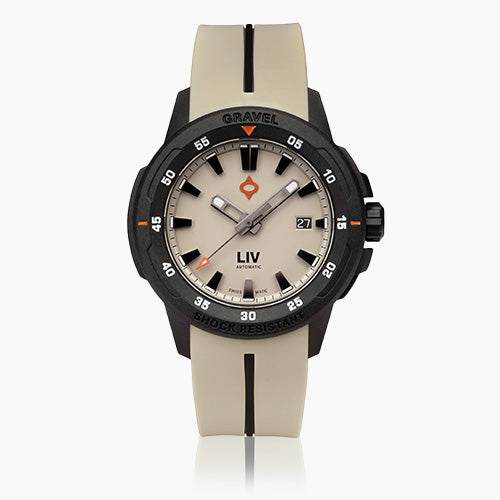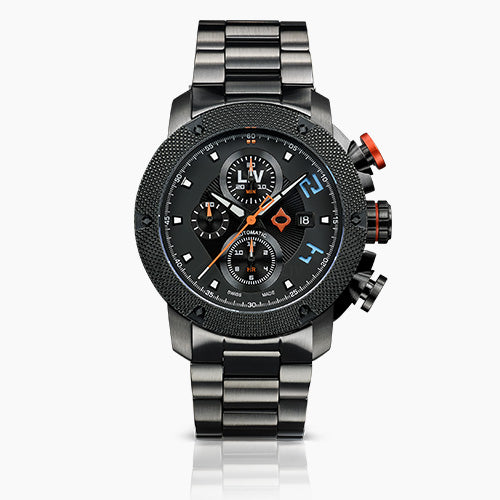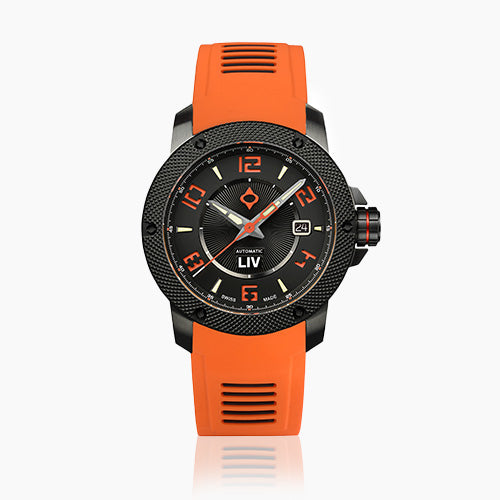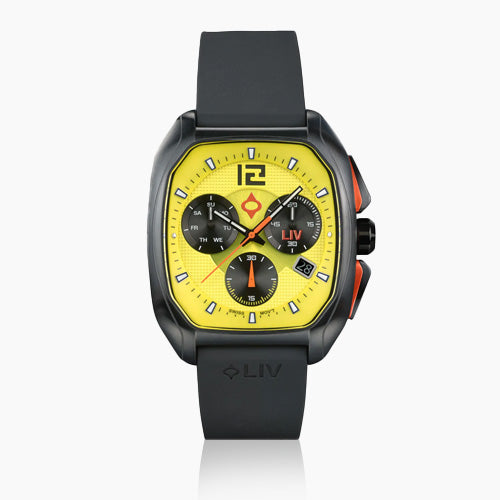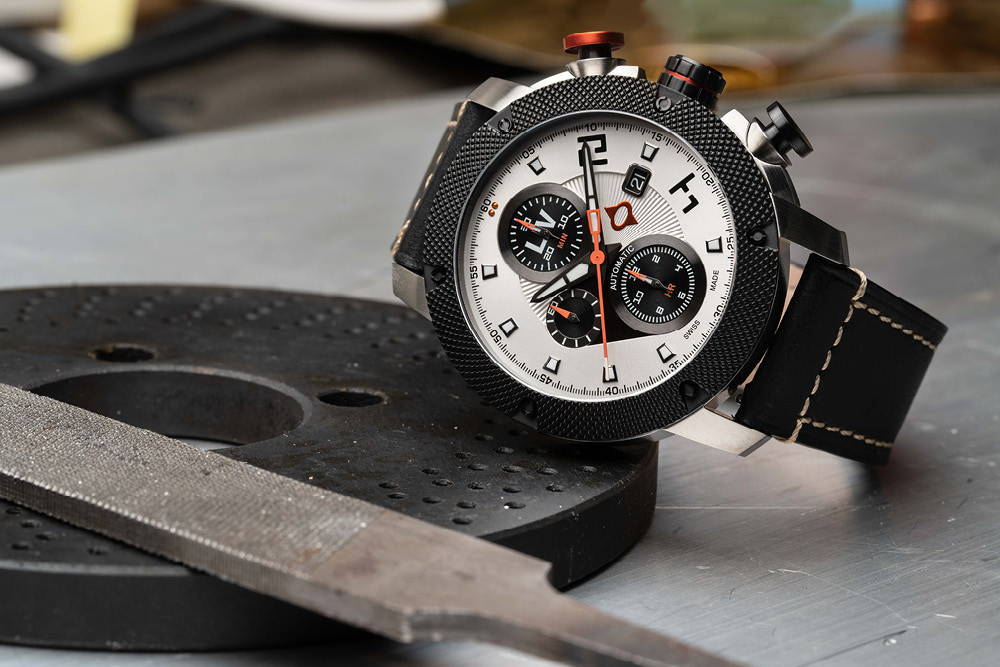
9 Types of Uncommon Mechanical Watch Complications
Share
Introduction
Unless you’re a stranger to our site, you’ll know that we have a fondness for mechanical watches and their movements. You’ll also know that we love educating our readers and customers about the ins and outs of this type of watch.
If you’re new to the world of watches, let’s explain watch “complications.” A complication is a feature or function of a watch beyond its time-telling abilities.
Most people have heard of the common complications found in mechanical watches--such as date display, automatic winding mechanisms, and chronographs.
But what about the mechanical watch complications that aren’t as common? That’s what we’re here for. Today, we’ll be taking a look at nine types of uncommon mechanical watch complications.
#1 • Minute Repeater
The minute repeater comes in at the top of our list of uncommon mechanical watch complications because of how complicated it is (pun intended). Few watchmakers are skilled enough to master this complication, so they’re extremely rare.
A minute repeater relays time audibly and will chime times down to the minute. Every chime of the hour, quarter-hour, and minute have unique tones that plays like a lullaby to the watch lover’s ears. According to Wikipedia, at the time of their invention in 1750, minute repeaters were used by people with visual impairments and as a way to note the time while it was still dark outside. (1)
#2 • Running Equation of Time
Did you know there is more than one “kind” of time? Enter the equation of time complication, a horological marvel that presents both mean solar and true solar time.
But what’s the difference? Mean solar time is the time displayed by clocks and watches, while true solar time is the time of nature as indicated by the position of the sun. Running equation of time complications display both mean and true solar time by two coaxial minute hands.
This complication is exceptionally complex to create. Because true solar time is no longer relevant in today’s day and age, we rarely see this complication except outside of watches with the highest-grade movements.

#3 • Flyback Chronograph
While the flyback chronograph complication is commonly seen in watches worn by race-car drivers and pilots alike, it’s not a common complication found in the everyday watches you & I wear. This is mainly because most people don’t require the stopwatch functionality.
What sets a flyback chronograph watch apart from traditional chronograph watches is how it needs to be reset. A standard chronograph watch needs to be stopped first to reset it, whereas a flyback chronograph watch resets to zero at the touch of a single button as opposed to three.
The flyback chronograph is known for its split-second accuracy. Because of this, it’s almost exclusively used in the recording of consecutive times.

#4 • Mechanical Alarm
The mechanical alarm is a very complex complication that serves a simple purpose: getting its wearer up in the morning! It does this by emitting a gentle noise and producing a vibration that the wearer can feel. David Duggan Watches breaks down the operation of a mechanical alarm complication beautifully:
Underneath the dial, an independent alarm hand is linked to a notched cam. The alarm hand can be set to go off at any time you choose during a period of 12 hours. When the time you decided on arrives, the cam will activate a lever that releases the energy contained in the mainspring to power a hammer that will repeatedly strike against the membrane.
When the alarm has sounded, the time will be reset. The wearer then needs to rewind the mainspring to reset the alarm. (2) The mechanical alarm is an example of a genuinely understated complication. And to be honest, we can’t understand why more people don’t opt for being woken up this way over the shrill of a regular alarm clock.
#5 • Jump Hour
Watches with a jump hour complication are hard to come by. A jump hour complication displays the exact current hour until that hour is over.
So instead of an hour hand that slowly sweeps between the hours, a jump hour hand will remain on one hour until the 60th minute of that hour has arrived.
In theory, this complication is supposed to make time-telling a little easier, but many wearers find it difficult to get accustomed to this way of telling the time.
#6 • Perpetual Calendar
A perpetual calendar complication is a term many watch-wearers have heard of, but few have seen with their own eyes. A watch with a perpetual calendar complication will display the day, month, and date of any given year—including leap years.
While this complication is extremely easy to incorporate into digital and analog watches,in mechanical watches it is incredibly challenging to master the perpetual calendar complication.
Because of this, mechanical perpetual calendar watches are costly to purchase and are uncommon to come across in regular watch shops and jewelry stores. (3)

#7 • Depth Gauge
Depth gauge complications are most often seen in diving watches. A depth gauge is a pressure gauge used to display the depth of water that is used by divers to avoid decompression sickness, which is extremely dangerous. (4)
Watches featuring digital and electrical mechanisms are commonly used in the diving world today. Before a more modern approach was taken, mechanical depth gauge watches were commonly used.
Mechanical depth gauge watches were replaced with digital and electrical depth gauge watches because they’re typically more lightweight and can withstand greater depths.
#8 • Rattrapante
Watches with a rattrapante complication can simultaneously record two separate measurements. This complication also goes by the names of split-second chronograph and double chronograph, and it’s often confused with the flyback chronograph complication we mentioned earlier.
The rattrapante complication is a type of chronograph with an extra hand to measure seconds. This double stopwatch functionality is especially handy when tracking multiple speeds—for example, to time different runners in the same race.
The production of a rattrapante watch is incredibly difficult, which is why watches with rattrapante complications are scarce.
#9 • Tourbillion
The tourbillon is undoubtedly one of the most prestigious complications a watch can have. The tourbillon complication helps negate the impact on gravity to increase the accuracy of a watch’s timekeeping abilities.
The tourbillon works by continuously rotating the balance wheel, spring, and escapement while the movement is running. (5) The different types of tourbillon complications include:
- Double-axis tourbillon
- Triple-axis tourbillon
- Quadruple tourbillon
- Gyro tourbillon
- Flying tourbillon
Tourbillon watches are notoriously expensive, which is why the complication is absent in most modern-day watches.
Final thoughts
Some of the mechanical watch complications we’ve mentioned are uncommon because they simply don’t meet a need in today’s way of life. While others serve relevant purposes, they’re uncommon because many people favor automatic everything.
Either way, these uncommon mechanical watch complications will fascinate those with a keen interest in watches and should not be forgotten.
Which of these uncommon mechanical watch complications had you never heard of before today? Or can you officially dub yourself ‘knower of all things mechanical watch complications’? Let us know in the comments section below!
SOURCES:
1 –https://en.wikipedia.org/wiki/Repeater_(horology)#Minute_repeater
2 –https://www.daviddugganwatches.co.uk/one-to-watch/2019/guide-to-alarm-complications/
3 –https://www.youtube.com/watch?v=jQEMRIAQTcw
4 –https://www.msdmanuals.com/home/injuries-and-poisoning/diving-and-compressed-air-injuries/decompression-sickness
5 –https://blog.crownandcaliber.com/tourbillion-complication-a-look-at-the-prestigious-function/




